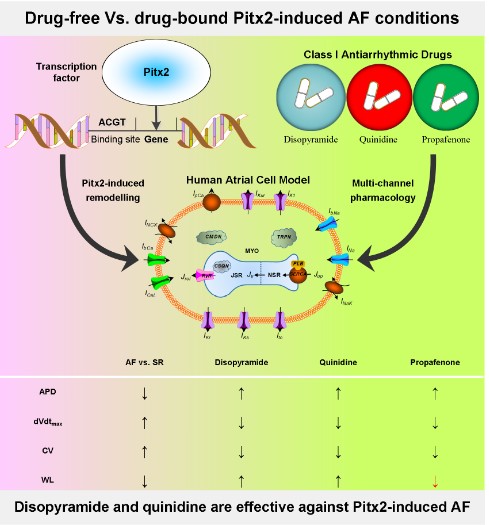Electrical remodelling as a result of the homeodomain transcription factor 2 (Pitx2)‐dependent gene regulation was linked to atrial fibrillation (AF) and AF patients with single nucleotide polymorphisms at chromosome 4q25 responded favorably to Class I antiarrhythmic drugs (AADs). The possible reasons behind this remain elusive. The purpose of this study was to assess the efficacy of AADs disopyramide, quinidine, and propafenone on human atrial arrhythmias mediated by Pitx2-induced remodelling, from a single cell to the tissue level, using drug binding models with multi-channel pharmacology. Experimentally calibrated populations of human atrial action potential (AP) models in both sinus rhythm (SR) and Pitx2-induced AF conditions were constructed by using two distinct models to represent morphological subtypes of AP. Multi-channel pharmacological effects of disopyramide, quinidine, and propafenone on ionic currents were considered. Simulated results showed that Pitx2-induced remodelling increased maximum upstroke velocity (dVdtmax) and conduction velocity (CV), and decreased AP duration (APD) and wavelength (WL). At the concentrations tested in this study, these AADs decreased dVdtmax and CV and prolonged APD in the setting of Pitx2-induced AF. Our findings of alterations in WL indicated that quinidine and disopyramide may be more effective against Pitx2-induced AF than propafenone by prolonging WL.

